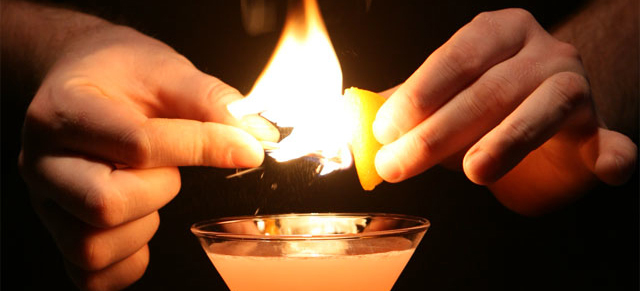Utlizing ‘AI’ Artificial Intelligence Software in the Hospitality Industry
Have you ever wanted more time and more help in your...

Initially I became interested in the topic of post-distillation additives playing a devil’s advocate position to the gluten-free arguments that propose all spirits (excluding liqueurs) are gluten-free as gluten would not be carried through the distillation process. Of course if a spirit was bottled directly off of the still then that argument would settle that discussion, but what about additives added post-distillation? It turns out that most spirit types have sub-categories that allow additives, sometimes limited to caramel coloring, but others such as rum which can be found to have little regulation depending upon the country of production.
As far as the gluten-free argument, I don’t have much to say other than the possibility exists for gluten containing spirits, but still much of this is theoretical at least relative to my current knowledge base. In contrast, on the topic of sugar additives there has been significant research using hydrometer readings, specifically on rums which have relatively lax regulation as a unified spirit category. As such we can start to look at the levels of post-distillation sugar addition, and determine any general trends in marketing.
To start off, certain countries such as Barbados, Jamaica, and Martinique have regulations that forbid addition of sugar to their rums. As far as other countries the amount of sugar varies greatly with the highest levels not surprisingly present in the spiced rum category (Bacardi Carta Fuego 92 g/L, Dark Matter Spiced Rum 74 g, Chairman’s Reserve Spiced 41 g/L).
What is unexpected is the trend to add more sugar to the premium aged rums. For instance consider these rum comparisons from various well known producers with sugar added expressed in g/L:
Diplomatico 8 yr: 7
Diplomatico Reserva Exclusiva: 41
El Dorado 3 Year Cask Aged Rum: 0-5
El Dorado 8 Years Cask Aged Demerara Rum: 8
El Dorado 12 Year Old Finest Demerara Rum: 39
Pusser’s Blue Label (40% ABV) British Navy Rum: 6
Pussers 15 Year Old: 29
Ron Abuelo 7 Year Old: 15
Ron Abuelo Centuria: 27
Ron Zacapa Centenario 23: 20
Ron Zacapa Centenario XO Premio Platino: 41
As one can see there appears to be a trend to add more sugar to the more expensive products under the same label. Why would producers engage in such a practice? Simply because evolutionarily we seek out sweet tastes as a hardwired survival technique in the search for calorically dense foods; there is a reason why a pint of Ben and Jerry’s is generally accepted to be more appealing that a pint of pureed celery.
So is this a disingenuous marketing practice or just a way to use sugar as a “flavor enhancer”? I suppose this is an individual decision. For me it is somewhat reminiscent to the MGP revelations for bourbon where people were shocked to find out that many of the craft bourbons they swore by were sharing juice purchased from a distillation factory in Indiana. The way I deal with the potential bourbon dilemma is if tastes good and is at a price point I am willing to pay for it, I don’t care if it was sourced from Hoboken. Similarly I don’t plan on not including Diplomatica Reserva Exclusiva in my sipping rotation now that I know the exact number of grams of sugar added; that being said I have always felt it would be better if it was less sweet, as it tastes more like a liqueur to my palate, but sweet is only one facet of the flavor profile.
What does bother me is when producers are not upfront about what they add to their product and take a Chef Boyardee approach of dumping sugar into a substandard product and then unload it upon unsuspecting and gullible consumers. Also while aging a product is more expensive to produce, it doesn’t always make for a better tasting spirit, or at least guarantee a corresponding increase in palatability relative to the increased price point. So I can see how a producer might be inclined to lean more heavily on sweetening their premium products as a way to confound the public into believing the aging process was primarily responsible for the corresponding increase in palatability; such a practice likely has a valid psychological basis, as there have been a number of reported informal tests performed on groups where “super-premium” long term aged rums were compared to less pricey younger rums with sugar unknowingly added to the glass, without the tasters being able to discern a significant difference.
Arguments for sweetening rum include the historical legacy of rum where ancient recipes are purported to have included all sorts of post-distillation additives, as well as the comparison to cognac where adding sugar is a regular practice known as “dosing”. As far as the historical argument, tradition is no guarantee of quality, as so much of spirit history was based upon trying to cover up unpleasant flavors and harshness with additives just to make the product palatable. With regards to a comparison to dosing, cognac production has regulatory sugar caps, and in practice with most having less than 10g/L, and some of the best varieties having no additional sugar added. In this way rums that utilize greater than 20 g/L could validly be accused of going past simple “flavor enhancement” and using sugar to dominate the flavor profile to cover up inadequacies of the base distillate, or give an impression of the virtues of aging that in reality don’t directly parallel the increase in selling price.
Forewarned is forearmed, so check out the reference links that follow this article and see for yourself where your favorite rums fall relative to added sugar content.
http://thefloatingrumshack.com/content/index.php/168-talking-rum-and-sugar-with-richard-seale
http://thefloatingrumshack.com/content/index.php/166-talking-rum-and-sugar-with-alexandre-gabriel
http://www.alcademics.com/2014/01/how-much-sugar-is-added-to-your-rum.html
http://thefatrumpirate.com/hydrometer-tests-2
http://rumproject.com/rumforum/viewtopic.php?t=1683&sid=9297e8ea4c0efc9103766a4fc6b3db49
Have you ever wanted more time and more help in your...
MANGO MAGIC: Marco Estrada, Brownsville, TX 1 ½ oz Aviation Gin ¾...
ALOE WOK: Olya Sabanina, Saint Petersburg, Russia 1 1/3 oz Aviation Gin...
We have all strived to become better at our craft, or else,...
About the author, Elton Marvin Jr. has worked in the food and...
From starting out picking up a Flairco bottle after watching the movie...

Your cart is empty.
Click “Play” on the video above.
Click “Play” on the video above.
Click “Play” on the video above.

